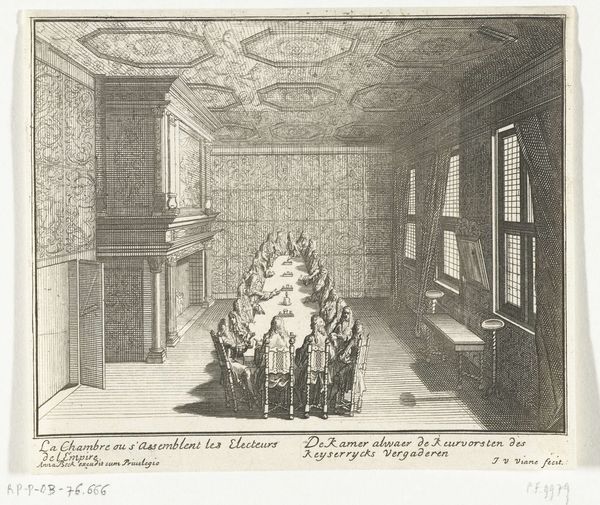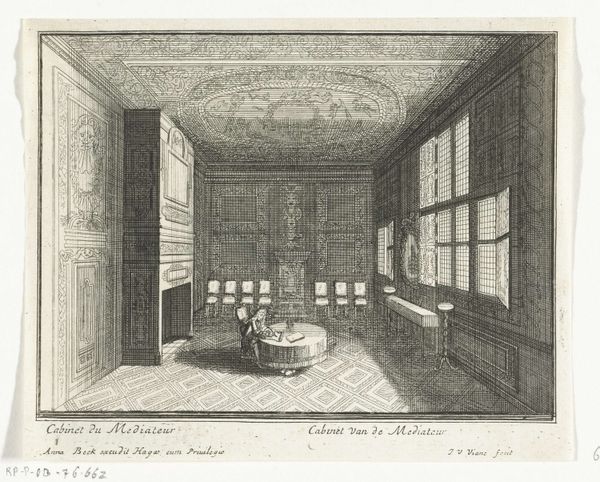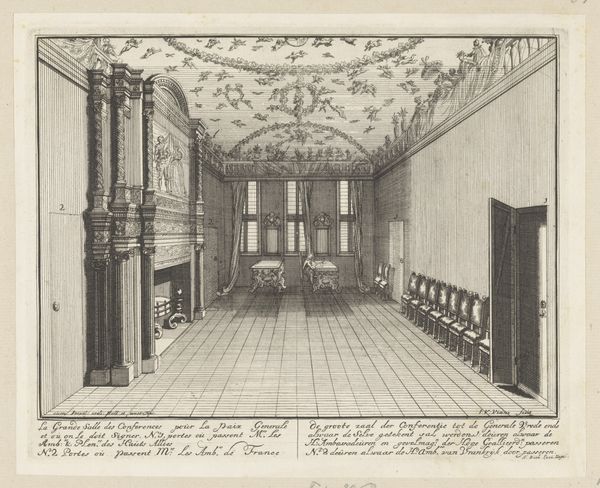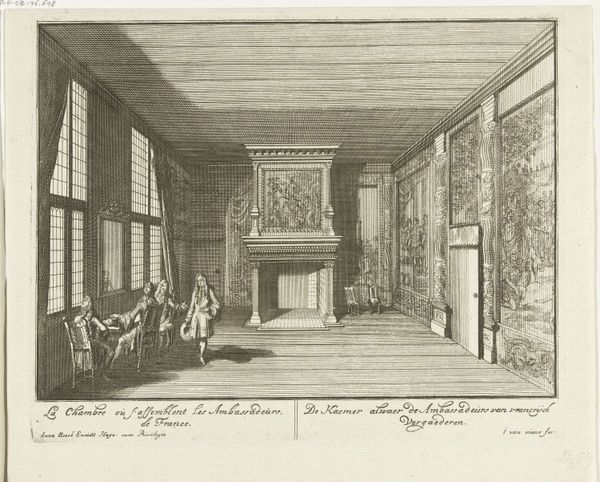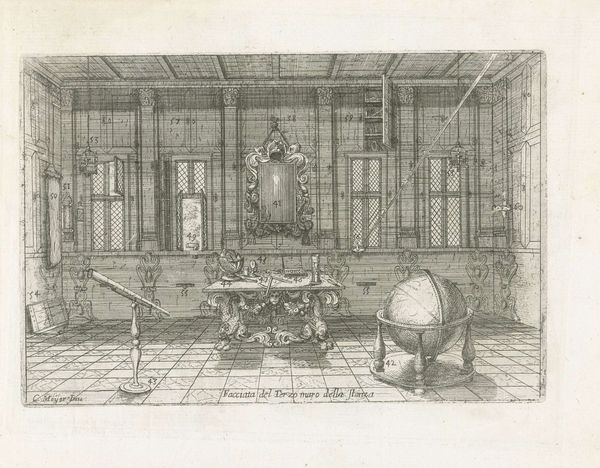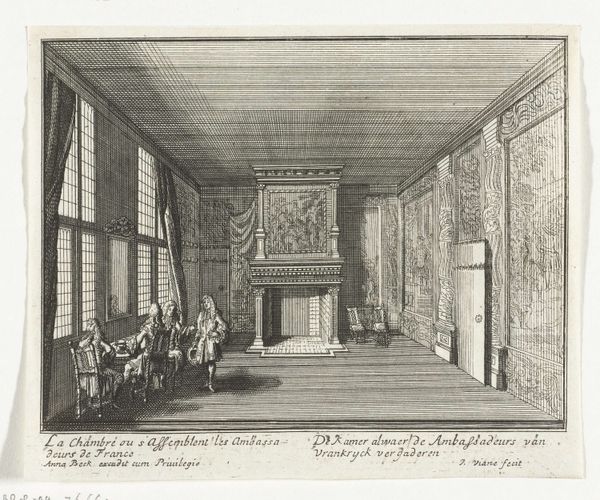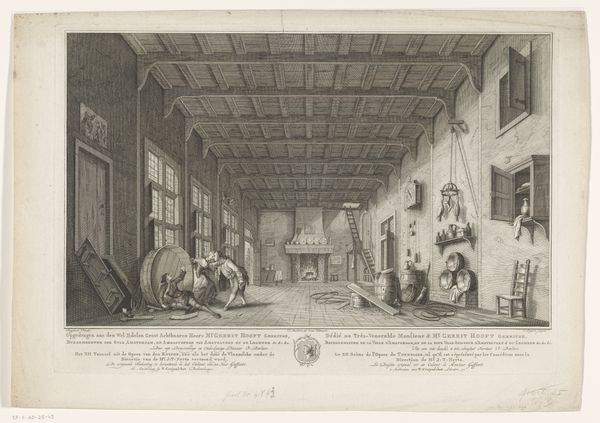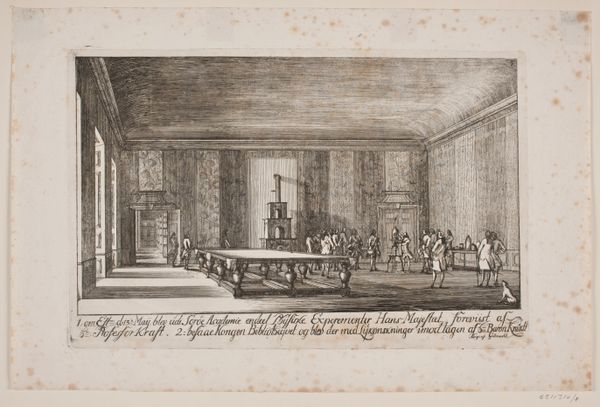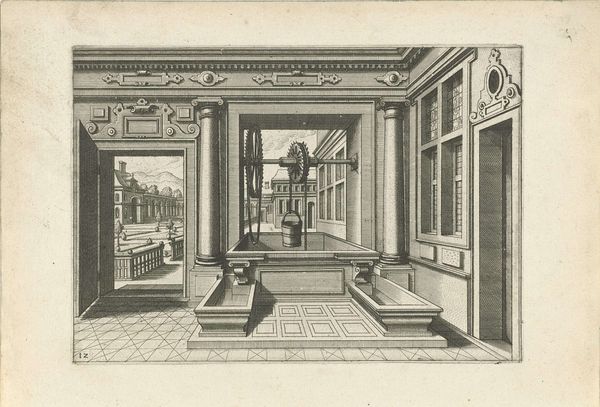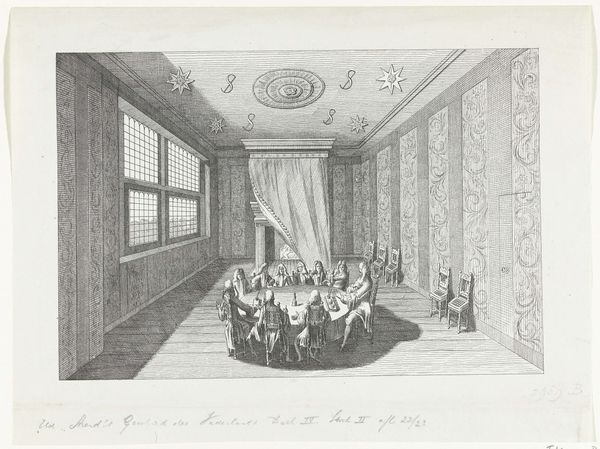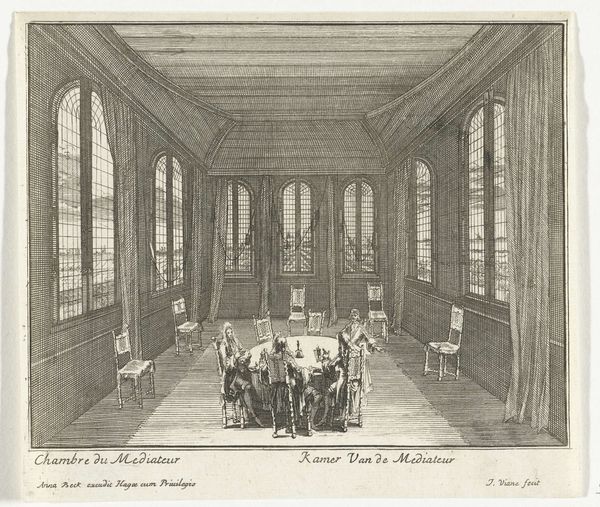
Kamer van de ambassadeurs van de keizer en de keurvorsten in het Huis ter Nieuburch in Rijswijk, 1697 1697
0:00
0:00
engraving, architecture
#
baroque
#
line
#
history-painting
#
engraving
#
architecture
Dimensions: height 220 mm, width 274 mm
Copyright: Rijks Museum: Open Domain
Curator: This detailed engraving, "Kamer van de ambassadeurs van de keizer en de keurvorsten in het Huis ter Nieuburch in Rijswijk, 1697", by Jan van Vianen, shows a fascinating moment in history. Editor: It strikes me as quite stark. The overwhelming impression is the geometry—all those receding lines converging. And that highly detailed wallpaper adds to the tension. Curator: It's certainly precise. Engravings depend on skilled labor; each line meticulously etched, controlled by the artist. This medium allowed for dissemination of imagery related to the treaty being discussed here. Consider how many copies could be printed and distributed, influencing public perceptions of power and diplomacy. Editor: Yes, the dissemination is key. It offers insight into how the Peace of Rijswijk was being framed, literally, for the public gaze. It transforms a real historical event into a mediated image, shaped by the artist and, of course, by the socio-political climate of the era. Curator: We see the trappings of power - the high ceilings, patterned wall paper and furniture design elements, serving as the stage upon which political actors play out treaty negotiations to signal both dominance and perhaps negotiation or compromise. What stories do these opulent chambers communicate through materials and craftmanship? Editor: Right, what story is being crafted around this process and presentation? The historical implications are pretty intriguing when we consider art’s role in shaping political narratives and influencing power structures. This image would have been shown far and wide; solidifying particular viewpoints regarding the treaties for people near and far! Curator: Looking closer reveals the artist’s emphasis on the labor involved and skilled use of materials like copper. What labor was required to manifest the original location and translate to an etched recreation? A highly material exercise, in labor, copper, paper and ink for mass production and a controlled image that extends beyond craft! Editor: Absolutely. It makes one appreciate how visual art, particularly something like an engraving meant for wide circulation, became an integral tool of statecraft and public image making at the end of the 17th century. Curator: Indeed, it really invites consideration about access, craftsmanship and the politics of dissemination during the period. Editor: And it certainly compels us to think more deeply about the role of images, particularly meticulously crafted ones like this, in shaping the course of history.
Comments
No comments
Be the first to comment and join the conversation on the ultimate creative platform.
